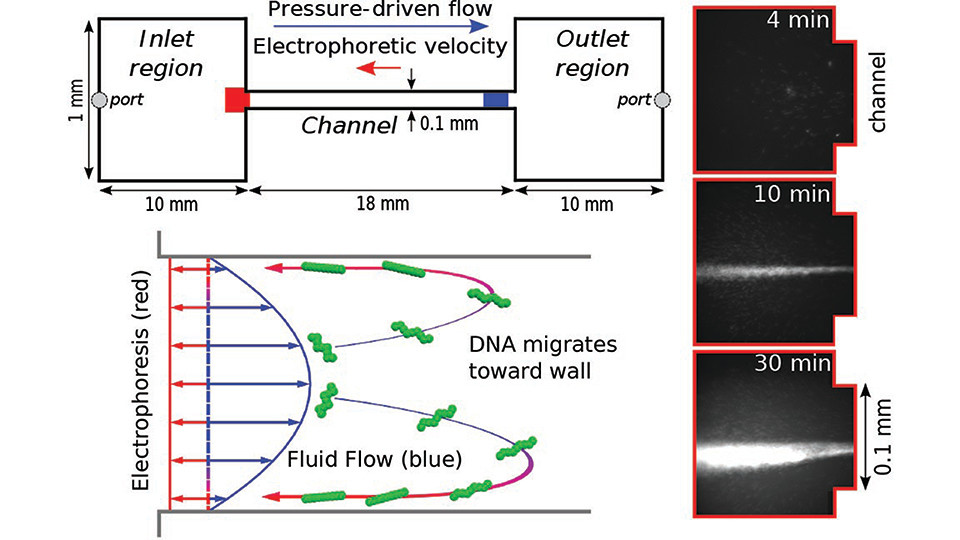Transverse migration is used to concentrate and selectively trap DNA through microfluidic process and has advantages over traditional methods of extracting and purifying DNA.
Impurities in DNA samples can lead to inaccurate measurements and affect experiment results. Because of this, maintaining DNA purity is a crucial aspect of emerging analysis tools.
Butler et al. developed a device that can purify DNA without breaking it into shorter pieces and drives the concentration using electro-hydrodynamic migration. The process uses a weak DC electric field and fluid flow to manipulate DNA. Their results showed that increasing the ionic strength of a buffer would reduce the migration and trapping efficiency of a microfluidic device, proving that migration is induced via electro-hydrodynamic interactions.
According to the authors, these electro-hydrodynamic interactions have typically been overlooked in similar studies but must be included to accurately predict migration in microchannels.
They studied velocity fluctuations in the fluid caused by electric fields acting on polyelectrolytes, which are charged polymers similar to DNA, and discovered quantifiable changes to the fluid dynamics caused by these fluctuations.
“Rather than building upon existing technology, we were investigating fundamental questions regarding the dynamics of macromolecules. While pursuing our modeling and experimental activities, it became obvious that our work might enable an elegant and efficient method for concentrating and purifying DNA,” said Butler.
The authors suggest that the microfluidic pre-processing of DNA can be integrated with other processes for larger, lab-on-a-chip applications, which would be useful for a wide range of biological and biomedical testing applications. The authors expect to use this process to separate and purify DNA from biological samples such as cell lysate. They intend on enhancing the speed and efficiency of the device as well as adapting it to be more portable.
Source: “Transverse migration and microfluidic concentration of DNA using Newtonian buffers,” by Ryan J. Montes, Anthony J. C. Ladd, and Jason E. Butler, Biomicrofluidics (2019).
The article can be accessed at https://doi.org/10.1063/1.5110718.
Published by AIP Publishing (https://publishing.aip.org/authors/rights-and-permissions).
“This article may be downloaded for personal use only. Any other use requires prior permission of the author and AIP Publishing. This article appeared in AIP SciLight and may be found at https://aip.scitation.org/doi/full/10.1063/1.5120477#.XT9FWayeukk.twitter

